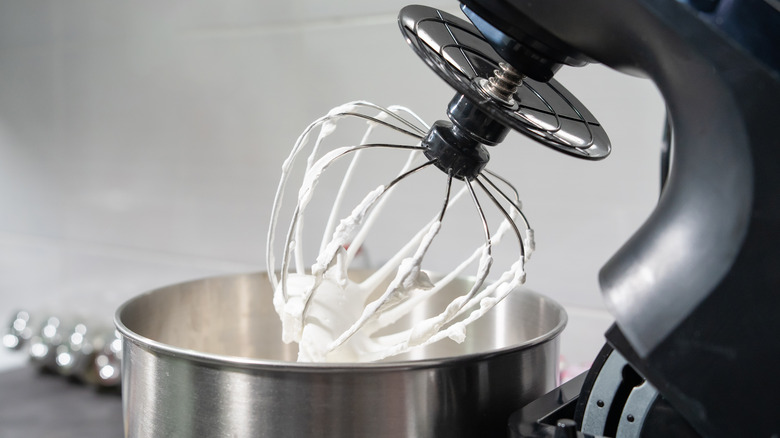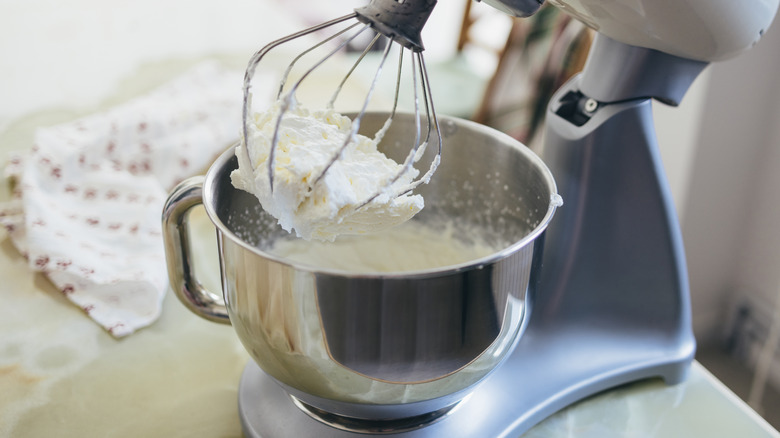The Silly Mistake To Avoid When Making Whipped Cream With A Stand Mixer
Opening a can of whipped cream is convenient, but it just doesn't compare to homemade, especially since making your own is so easy with a stand mixer. However, for perfectly whipped results, you'll want to avoid the mistake of using the wrong attachment.
The flat beater attachment is often the most commonly used in general because it's good for mixing everything from cookie dough to cake batter. However, it shouldn't be your default for every kitchen task; think of it as a spoon replacement. On the other hand, the whisk attachment replaces a hand whisk and is specifically designed to aerate ingredients. While you'll eventually produce whipped cream using the flat paddle attachment, it won't be as fluffy and high-quality as it would if you used the correct attachment, and it will take way more time to make.
Since heavy cream is very liquid to begin with, you might want to start at a slower speed until you've reached a consistency that won't splash out of the mixing bowl. At that point, don't be afraid to crank up the dial on your mixer. After all, if it requires a fair amount of elbow grease on your end, the stand mixer will have to put in some effort, as well. You'll get the cloud-like whipped cream of your dreams by opting for one of the highest speeds on your stand mixer.
Why using the right attachment matters
While you can find some more budget-friendly options, high-quality stand mixers typically come with price tags of a few hundred dollars or more. So, although the attachments can be replaced, you still want to ensure you're treating the appliance well. To keep your whisk in peak condition, make sure you switch back to the flat beater attachment for more heavy-duty mixing, as thick, heavy batters can potentially harm the structure of the more delicate whisk attachment.
On a related note, you also want to double check that the attachment is positioned at the proper height in your mixer. Yes, there's only one place to switch out the attachments, but things can shift a bit over time with use — be prepared to detach, reposition, and reattach as needed. A whisk attachment that's too low can potentially damage both the mixing bowl and the stand mixer's motor, so before you add the heavy cream, test it out and make sure the whisk isn't scraping the bottom of the bowl.
While you already have your stand mixer out with homemade whipped cream in progress, why not splash in an add-in that'll elevate your whipped cream even further? Something like lemon zest and juice could add a touch of freshness and acidity, while honey introduces sweetness with a bit more depth of flavor than plain sugar. Just make sure to also include a stabilizer like dried milk powder or powdered sugar if you need your whipped cream to last.

